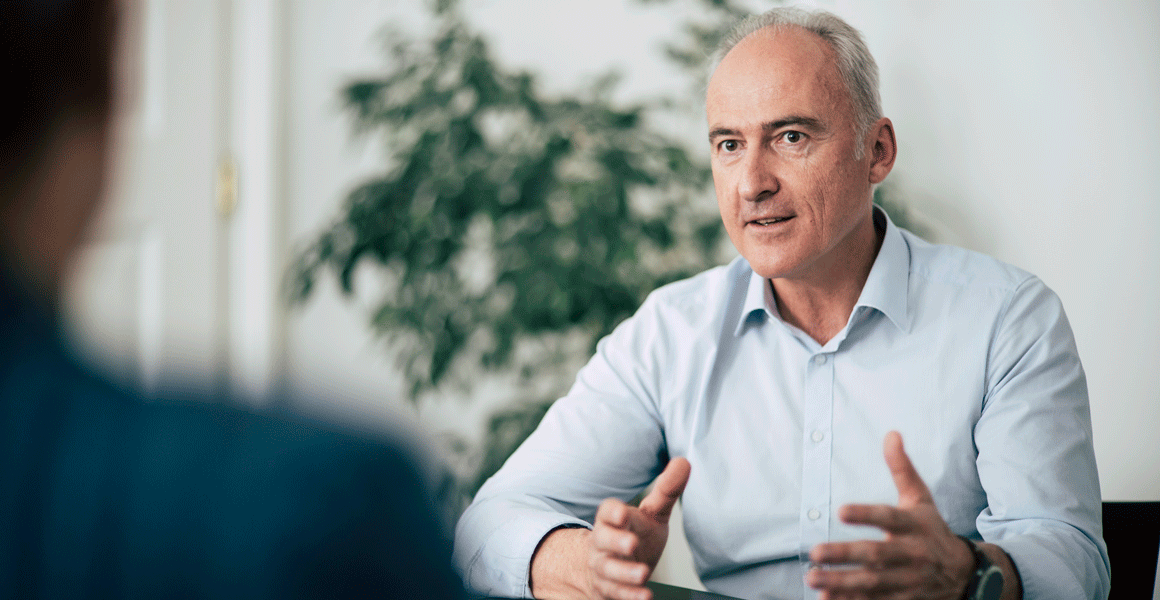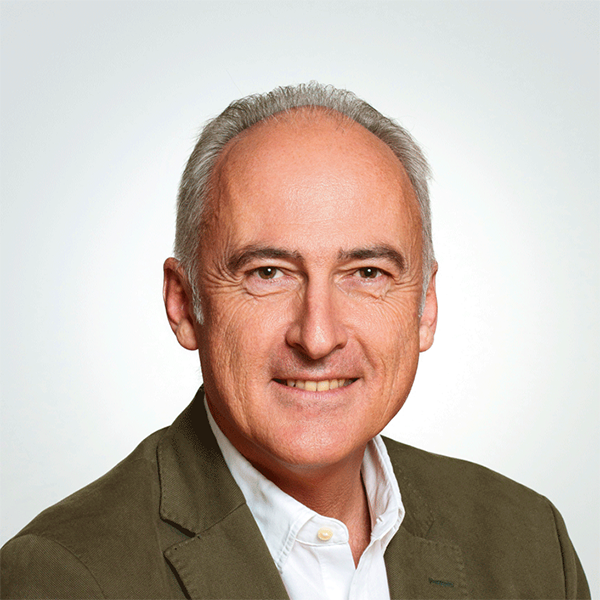What are the large technological trends driving the transformation?
Mayer: Artificial intelligence is certainly the main trend. This methodology has been around for a long time, but it is the increase in computing power and the availability of data that has allowed AI to gain such enormous momentum. There is also still a lot of opportunity in the field of sensors and the field of mobility is also unbelievably dynamic: There is a lot of investment, modernisation, and expansion in the public domain. There are huge endeavours in the field of individual transport to bring resource optimisation and increased efficiency into vehicles. That is transformation! Fifteen years ago, electro-mobility was just hovering on the side lines. Now we see increased market penetration. Communication technologies are also transformation drivers. Improved communication in those areas in the world that are hardly connected has positive effects on the use of resources such as the reduction in travel distances. Mega-constellations of satellites offer long-term advantages for this. These consist of a large number of satellites that are arranged as a network in space and enable services such as communication, internet access, earth observation, and more. This is all important for frictionless and cost-saving communication in remote or sparsely populated areas since the laying of fibre-optic cables would simply be too cost-intensive.
What role does digitalisation play in the process of making the world greener?
Mayer: It is obvious that the green transformation can only exist with the support of technologies. Innovation and technology need to move more in the direction of sustainability. There is a lot going on, but there is still room for improvement regarding the optimisation of resources and efficiency. One huge challenge is embedded in the answer to the question how energy can be made available and controlled in a more resource-efficient way – so-called power electronics are needed. A second lies in the monitoring of our resources and their resilience, for example the monitoring of our forests as a research focus in our research group Remote Sensing and Geoinformation. We have decades of expertise in the field of environmental monitoring which we continue to expand upon. A third challenge that I see is to create the highest possible and efficient return of resources in the sense of a functioning circular economy, for example smart recycling or automated material recognition. We lead the field in characterisation of material flows with multi-spectral sensors, in the research and implementation of new, bio-based, recyclable, or compostable materials, or in the evaluation of lifecycle-based sustainability (LCA).
What obstacles need to be overcome along this path?
Mayer: The time factor is definitely an obstacle. The development of technology is time-intensive and requires tenacity, from the concept through implementation and product development. Very often, large developments do not progress as quickly as necessary due to the small structuring of programs in Austria and Europe. What is actually an advantage in the aspect of respecting individual approaches is simultaneously a stumbling block if large problems are to be solved.
Numerous approaches to solve the issues of efficiency and resource-protection are based on digital representations of reality - digital twins. What advantages do they bring with respect to sustainability?
Mayer: Digital twins increase transparency. They are used in areas such as mobility for example in vehicles, in production, in medicine, and in the environment. The latter are generated using remote sensing technologies both geometrically and radiometrically. The results are terrain models that can be used in time sequences to analyse changes in the environment. Forests and temperature development in cities can be monitored and insights gained over a certain time period. Digital twins are also important for the carbon-capture process, which is the process where an attempt is made to separate out CO2 and make good use of it before it reaches the atmosphere. Using the example of forestation, at least two research questions can be derived from this: what effects do large-scale deforestation activities have on the climate and vice versa how does the changed climate affect the forest system?
How can artificial intelligence contribute to sustainability?
Mayer: For example, we are currently conducting research into mobility behaviour, automatic waste material recognition and recycling, and the analysis of the Earth’s surface using remote sensing. The individual analyses are largely based on AI, or to be more precise, machine learning. Generally speaking, artificial intelligence is a useful approach to solving problems where complex processes are at work.
Both digitalisation and the transition to new technologies such as e-mobility will increase the demand for energy. Where will the energy for all this come from?
Mayer: That is a core question that is causing many a headache. There is no answer yet. It is perhaps possible with conventional energy generation, but counter-productive from an environmental perspective. It is currently not possible to cover the energy demand with renewable energies. This means that we have to significantly reduce our energy consumption or find new ways to produce energy. But that in turn needs an appropriate ramp-up from the concept, via planning permission, construction processes, all the way to execution: this could take decades.
In your opinion, what is necessary to achieve the climate goals?
Mayer: Technology openness and, of course, tenacity. As a community, we are often far too lackadaisical in our approach. This why politicians are under pressure and would like to act quickly and as a result of the urgency prescribe technologies. In my view, this is not the optimum approach as not all technologies and their impacts on the ecobalance have been completely thought through, for example regarding their energy requirements.
On a scale from 1 to 10, what is the level of your personal green transformation?
Mayer: I see myself at 5. My goal is to save more energy and to use fewer resources.


